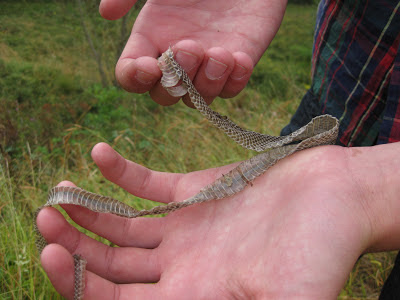With Tom Forward of Gatwick Greenspace Partnership
River Mole grasslands along our Breeding Bird Survey transect
Friday was another one of those days where we were literally tripping over wildlife. The River Mole grasslands (just north of the airfield) are looking their best right now with many diverse and beautiful grasses in flower. I had never really noticed how rich and striking grasslands can be until last year after attending the grasses, sedges and rushes course with the Sussex Wildlife Trust. It was almost worth putting up with the hayfever! Almost.
NWZ Grassland along the diverted section of the River Mole
Crested Dog's Tail grass (Cynosurus cristatus) in flower
Quaking Grass (Briza media) in flower
Grass Vetchling (Lathyrus nissolia)
A pair of mating Eyed Hawk-moth (Smerinthus ocellatus)
These cryptic individuals are an impressive type of Hawk-moth which when disturbed will show a pair of brightly coloured eye-spots on their under-wings... see Eyed Hawk-moth - UK Moths. They were pretty absorbed by their own 'activities' and so didn't pay us much attention. I am just starting out with moth identification and it is really addictive; I'm like a lumbering T-rex in wellies, chasing anything which moves...
Blood Vein moth (Timandra comae)
I managed to collect this in an insect pot. Then nearby Tom yet again spots something cool roosting up in the grass, well-camouflaged among the scattered white rose petals and the patches of Cuckoo-spit...
White Ermine moth (Spilosoma lubricipeda)
Another new species on our timed survey was Ring-necked Parakeet; these have been established in the Gatwick area for quite some time. This is a species not native to Britain but are the result of escapees from over 40 yrs ago, as a result they are now very common around London and the south east.
Some of the usual suspects were conspicuous in their absence including Meadow Pipit, Lesser Whitethroat, Mallard Duck, Carrion Crow and Common Buzzard, which I had seen here just 2 days earlier. Sadly a no-show for Kingfishers too but no reason to think they might not still be around. Another thing I had thought I'd heard the week before was a lone Cuckoo in Brockley Wood which called just twice. Apparently by now they might be winging back down south on their way to more continental climes.
Here are a few of the other niceties we have seen:
Ragged Robin (Lychnis flos-cuculi)
Roosting female Broad-bodied Chaser dragonfly (Libellula depressa)
Crosswort (Cruciata laevipes)
Dog poo bin across the river
Our bird species total came to 30 on the timed part of the survey; just under our average count. You can see our day's species list here: NWZ Breeding Bird Survey June 2013



















































